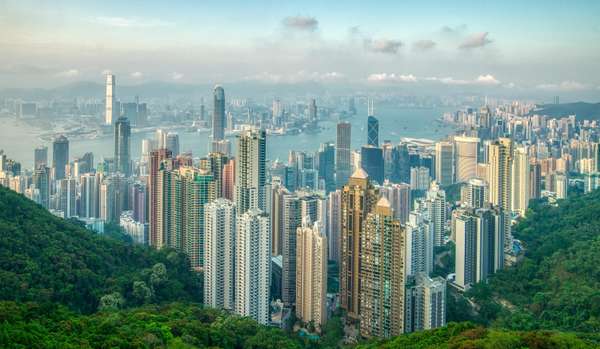As a travel photographer I have never been a big fan of what was traditionally understood as HDR images, artificial creations that in many cases seemed past a neon filter. Over the years I ended up adopting its most contained version, tonal mapping, as one more instrument when it comes to capturing certain scenes, but until the release of Lightroom 6 I did not find a tool with which I really felt comfortable within my usual workflow.
If you are looking for HDR Photography tool then the first name comes out by top professionals is Aurora HDR from Skylum. It comes with Quantum HDR Engine which is all powered with Artificial Intelligence. It is one of the most advanced HDR photography software offerings 20+ essential tools specific for HDR only.
- Aurora Hdr free download - Mozilla Firefox Aurora, Aurora 3D Animation Maker, Aurora Blu-ray Media Player, and many more programs.
- 7/10 (13 点) - 無料でAurora HDRをダウンロード Aurora HDRはプロフェッショナルのグラフィックデザイナーが利用する特別なデザインプログラムです。是非ともこのプログラムを利用してください。.
Given this background, I confess that I set out to analyze Aurora HDR, a new application designed specifically for OS X by Macphun Software in close collaboration with Trey Ratcliff, one of the photographers specializing in HDR the most famous in the world, but after a week with her I can only recommend that you give her a chance. High dynamic range… here we go!
In case I catch a clueless one, HDR photography is a photographic technique that allows us to overcome the limitations of image sensors in digital photography. This process uses multiple shots from the same scene with different exposure values (bracketing or bracketing) that are then combined into a single image with a higher dynamic range. Three photographs are usually used in which the shutter speed or ISO sensitivity (preferably to opening) is modified, one with the average exposure that we would normally make, plus two others, one overexposed to obtain detail of shadows and another underexposed to regain the highlights.
An example: in a sunset in the middle of the city like the one in the upper image, the first exhibition would capture the typical photograph with a beautiful sky but most of the city in the dark; the second would burn the sky but it would let us enter the streets and fail worse lit to appreciate them in detail; and the third would be the darkest of the three revealing a great intensity in the colors of the sky, especially if the sun was in the frame and burned part of the shot even in the average exposure.
-HDR photography is a photographic technique that allows us to overcome the limitations of image sensors in digital photography-
The application’s interface is simple in operation but immense in options with up to thirteen groups of sliders to fit to the millimeter aspects such as tone, structure, noise, color, detail and many more. Some seem redundant to the naked eye while others are an enigma even to Photoshop or Lightroom veterans, forcing us to take an end-to-end adjustment to find out what the hell it actually does.
Beyond the typical controls I was pleasantly surprised that the guys at Macphun, perhaps guided by a photographer like Ratcliff, have allowed themselves to think «outside the box» by including simple controls for tasks that I myself usually do in a more manual way in other applications. This is the case of the top and bottom lighting panel, to modify the exposure in these areas, or the (different) «glow» controls to achieve the characteristic hazy effect of some of Ratcliff’s best-known photographs.
If you don’t want to complicate your life, Aurora HDR has different sets of presets, recipes to cook the images and get a certain look that are organized between basic, architecture, landscapes, interior s and dramatic. We can bookmark our favorites and move from one to the other quickly or create our own recipes when we feel more comfortable with the applications and want to find our own style.
Finally, another very useful feature is the layer support, implemented next to a brush to create masks quickly while stacking variations of HDR to, for example, make the rainbow of this image stand out more and give more intensity to the blue areas of the sky without the ground going away from mother. Again, Macphun might have just copied the operation of Photoshop masks forgive his place has made his own approach to make the process even more organic.

Aurora Hdr Android Tv
Aurora HDR and Aurora HDR Pro
Aurora HDR is available in two versions. The normal is exclusively in the Mac App Store at a starting price of 39.99 euros which will subsequently rise to 49.99 euros, while the professional one costs 114 euros and can be purchased through the Macphun online store. The version that we have used for this analysis is the Pro, but both are practically identical with the exception of some advanced tools and features:
- Native RAW image support.
- Unlimited number of sockets for bracketing/forking.
- Unlimited number of layers.
- Integration with Photoshop, Lightroom and Aperture (yes, apparently still out there) in the form of a plug-in.
- Some additional presets, including a dozen with Trey Ratcliff’s personal stamp.
- Brightness masks and degraded tool.
- Reduction of chromatic aberrations.
Conclusion

-Aurora HDR is one of the best specialized tools in this photographic mode, percent-
My overall rating is absolutely positive. Aurora HDR is one of the best specialized tools in this photo mode, maybe the best, but like any version 1.0 still has room for improvement. From adding more keyboard shortcuts to being able to control the brush size with the mouse touch surface just like in Lightroom, or some noise issues I’ve encountered in a particular image without too much explanation.
Despite these peros, Aurora HDR offers us a complete environment to treat our photographs from start to finish and find the final image that we had in our head at the time of pressing the shutter release, either from the most natural to the most histrionic (or stylized , if you are a fan of this end).
Confused about the difference between HDR and bracketed exposures?
Knowing The Differences Between HDR and Bracketing will get you started.
Now that we have a firm grasp on when to use HDR and bracketed exposures, let’s jump to the third step: How to Stack Bracketed and HDR Exposures. Unfortunately, as the settings for both HDR and bracketing vary wildly across different brands and types of cameras, I recommend you Google “[your camera] bracketing” or “HDR.”
I will discuss two powerful and popular stacking platforms: Adobe Lightroom and Aurora HDR. Adobe Lightroom Photoshop also has the same capabilities but there’s so much to say I’ll leave it to its own blog someday.
I first want to address something: if you edit using only Adobe products then do not fuss. However, if you want to stack in Adobe and edit elsewhere, beware stacking in Adobe as it creates a DNG file. DNG is an Adobe file type that will alter your colors if used in another program.
To use Adobe Lightroom for stacking:
- Find your exposures (however many depends on your settings) and select all of them. Do not select the stacked JPG.
- Right-click on any of the selected files and scroll to PHOTO MERGE > HDR.

Pause here and examine this pop-up. We have several options that are important in different situations.
- Auto Align is especially important if you did not use a tripod. It will ensure the major features line up.
- Auto Tone will edit the phone for you based on an algorithm. If you want full control over your edit, do not click this.
- Deghost is for exposures that aren’t exactly the same. For example, the people in my photo, people have moved dramatically in my background. Deghost will select the middle exposure and attempt to blend what has moved using the other exposures as a reference.
Displayed above is the deghost overlay showing what LIghtroom will blend, mostly the water, water reflections, and people in the background.
- Select MERGE and wait for Lightroom to merge your exposures to a DNG file, displayed in the upper left corner.
For those unfamiliar with Skylum Software or their processing programs, I am happy to introduce you to an incredible HDR program that’s giving Adobe a run for their money. Aurora HDR is a powerful tool that algorithmically produces stellar results in your photos with a familiar interface. It’s changing the game. I want to give you guys variance in the way you process your photos, How to Stack Bracketed and HDR Exposures included.
Download a trial version of Aurora HDR for free and follow along.
Aurora Hdr Android Tablet
With Aurora HDR open
- Click on OPEN IMAGE or DRAG your photos from Explorer into the program.
- A window will pop up with several options quite similar to Lightroom but more powerful. Let’s look.
First you will notice that all of your exposures are displayed alongside their exposure difference (EV -0.2, EV 0.0, EV +0.4). Autoalign is also available. Click on the cogwheel in the lower left corner.
Aurora Hdr Android
- Ghost Reduction is much more powerful here and you can also select which exposure to blend into. Lightroom does not offer this option.
- You can also select the amount
- Color Denoise algorithmically finds noise from your HDR conversion and blends it rather than smooths it. Lightroom’s denoise option blends, which makes you lose detail. Not here.
- Chromatic Aberration Reduction removes that nasty purple and green glow around the edges of objects in your photo. I always use that.
- Select CREATE HDR and wait for Aurora HDR will process your photo. Keep in mind it does not have the option for autotone before you stack, although it is available later.
Experiment with Aurora HDR and see if it’s right for you. You can also watch my comparison and see how I edit on my photography YouTube channel.
Aurora Hdr Android Phone
As a footnote: keep in mind that different scenes require different interactions. For example, if you have bracketed light trails, we’ll have to dive deeper into that. Please comment below if you have a specific exposure stacking issue I can help with or would like a full tutorial.

